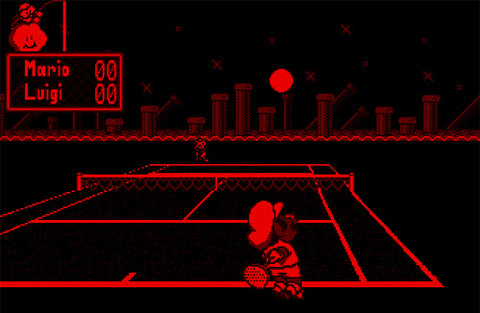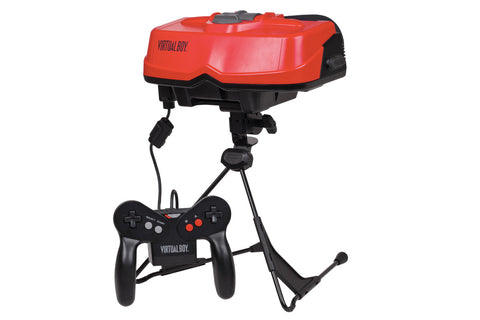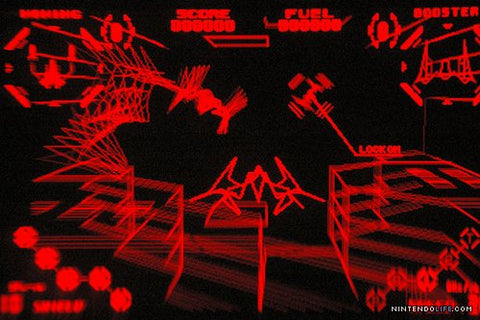Trending
Opinion: How will Project 2025 impact game developers?
The Heritage Foundation's manifesto for the possible next administration could do great harm to many, including large portions of the game development community.

Featured Blog | This community-written post highlights the best of what the game industry has to offer. Read more like it on the Game Developer Blogs or learn how to Submit Your Own Blog Post
In 1995 Nintendo decided that they weren’t going to be held back by science fiction or anti-social behavior. They were going to dip into VR. And in doing so, they were going to make the most physically uncomfortable gaming console of all time.

In 2019, virtual reality is in a really exciting place. It seems like there are new technologies breaking out once every few months to get excited about. Gaming in a headset now feels more and more natural as the days go by.
In 1995, virtual reality was not in that place. Still a science fiction tool more than a reality, VR was not ready to fully enter the zeitgeist. Playing video games on a headset didn’t make sense to many people. It took away the social aspects of gaming, like couch co-op and those on deck watching the screen, cheering the player on, people thought.
Nintendo - never the company to shy away from innovative game consoles - decided that they weren’t going to be held back by science fiction or anti-social behavior. They were going to dip into virtual reality. And in doing so, they were going to make the most physically uncomfortable gaming console of all time.
Released in 1995 the Virtual Boy, was a Nintendo game console meant to be their first step into virtual reality. It consisted of a headset with a screen that was only a few inches off of the eyes, and could only display two colors in each eye. Red and black are the trademark colors of Virtual Boy games.

It’s reception at the time was incredibly bad. It sold just under 800,000 worldwide units, a fraction of what the Famicom, Gameboy, and SNES would have sold in the same period.
The absolute failure of the Virtual Boy makes it a wonderful novelty. People have started to search out or replicate the console, emulators are popping up, and the games are a target for many collectors. They aren’t an incredibly difficult target, as only 22 were released. Those 22 included 2 Mario titles, and Virtual Bowling, a prequel to Nintendo’s inarguable best game.
In the interest of getting to the point, here are the relevant aspects of the Virtual Boy’s history:
Development began on the Virtual Boy when Nintendo R&D was shown a red LED display and head-tracking prototype from a company in Massachusetts.
The development and design process took four years, but the team was forced to cease refinement early as Nintendo began to focus on the N64.
The Virtual Boy was announced via The New York Times, and heavily promoted until release.
Upon release, it was met with nearly unanimous jeers. The display was ugly, the machine clunky, and the game selection boring. For many people, the most obvious issue was that the gameplay didn’t feel natural. Being inside of a headset took away the social aspects that were vital to gaming. The most positive reviews asked why the machine was made and if it could possibly succeed, while nearly all reviews added a sentence like this one: “Playing too long made me dizzy,” or “gave me a headache,” or “made me nauseous.”
The man who lead development of the Virtual Boy left Nintendo shortly after it’s release.

There isn’t much of a medical explanation for what the Virtual Boy was doing to people to cause those effects. There is also little literature to answer whether or not the Virtual Boy would cause permanent brain damage, like many people speculated. For all of the case studies on the failure of the Virtual Boy, no one seems to have put much thought into one of the most important aspects.
Of course, this could be because it’s seemingly so obvious. The horrible optics and premodern 3D visuals combined to make nausea an inevitability. Add in the screen's close proximity to the eye, and eye issues also seem like a certainty.

It’s reasonable to assume that motion sickness played a not insignificant part, however. Eyestrain is certainly linked to headaches, but not the reported dizziness or nausea. Medical literature considers motion sickness a very real threat with modern virtual reality, so I think we can assume that it’s in play here.
Very similar to motion sickness, the Virtual Boy was likely causing issues with depth perception. The attempt at 3D was lackluster at best, and having it in an enclosed space can begin to mess with the eye. In 2017 there are concerns that VR would mess with our perception, and the same was true in 1995.
The Virtual Boy by itself can be an enjoyable experience but it was given no help by the games that were released for it. Scrapping the idea entirely in 1995 was Nintendo throwing the baby out with the bath water.
We can’t necessarily design around hardware limitations that cause issues. If it’s the red and black color scheme and general closeness causing the issue, we can only throw in repairs. Actually, some games attempted that with an automatic pause every couple minutes, that unfortunately did not function. Little repairs like those are not enough. An innovative design philosophy is necessary.
So, a game for the Virtual Boy that doesn’t cause severe pain needs to work around 3 things. It needs to stop eyestrain, cannot cause motion sickness, and cannot mess with depth perception. Designing around these is actually fairly simple, and can become rules for future games.

Let’s start with eyestrain. The Virtual Boy will strain your eyes after some amount of time, and we can’t change that. Implementing automatic pauses isn’t a great answer. What we can do is have our game break at convenient intervals to allow the player time to rest without simply pausing the game. The game must stop.
Motion sickness is slightly more difficult. Companies have been looking for ways to avoid this for a long time. Given that we’re operating on early 90s hardware, the solution can’t be anything too complex. Instead, we’ll add this rule: the game can’t move too quickly.
Finally, preventing issues with depth perception requires us to do one thing. We have to throw out a console marketing tactic. The game can’t be 3D, but it can have a 2D panorama.
Within these rules, we can try many different genres. A Telltale style, dialogue based story game could work. If they had Pokémon ready to go that would have worked. I think the most clean solution, though, is a roguelike with turn based strategy combat. You could use the full screen during exploration at a speed slow enough not to cause nausea, and death is a good place for people to take off the headset.
The Virtual Boy was well before it’s time, and poorly designed in many ways. But it’s not impossible to get right. With a few clever ideas and a lot of testing, you could probably enjoy playing one of these games without turning it into a contest of toughness.
Read more about:
Featured BlogsYou May Also Like